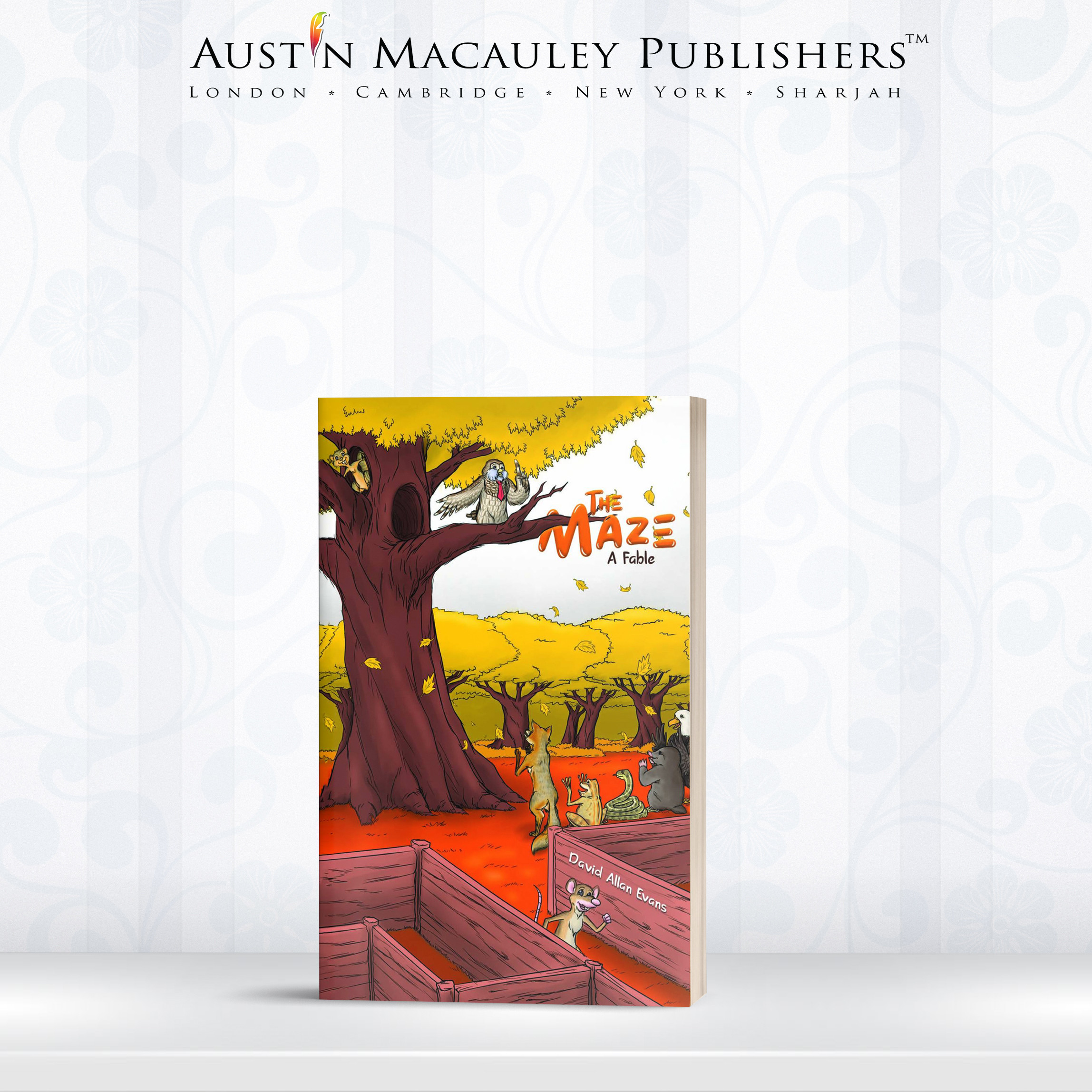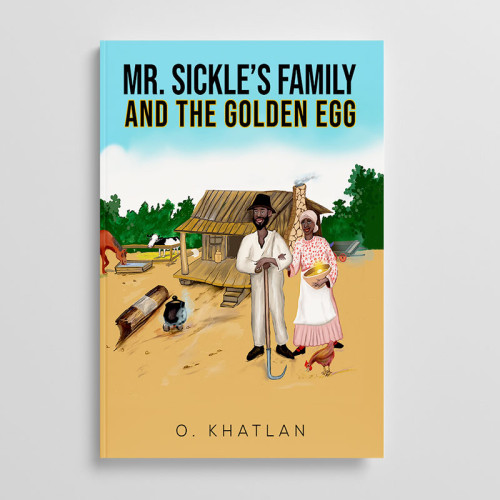
The Maze: A Fable gets an amazing book review by E. Dissanayake
David Allan Evans, author of The Maze: A Fable, gets a stunning book review from Ellen Dissanayake. Ellen praises the storyline of The Maze and calls its characters engaging and charming. According to the reviewer, the book incorporates discussions about philosophy, poetry, and how to live one’s life as an individual and with others. Ellen Dissanayake is a scholar and the author of several books.
The Maze: A Fable is a humor-fantasy book that revolves around the concept of a maze. In the book, the maze is created by Sniff to display the superiority of rats as maze-runners. It explores the necessities of survival, the defense of territory, and the conquering of enemies through group cooperation.
David Allan Evans grew up in Sioux City, Iowa. He had a keen interest in literature, natural history, and writing poetry ever since he was a teenager. He has written numerous collections of poems over the years. David has been a poet laureate of South Dakota for 14 years. Check out the complete book review below.
THE MAZE: A FABLE, by David Allan Evans
(2020, London and New York: Austin Macauley Publishers, 200 pp.)
Ellen Dissanayake ([email protected])
From Aesop to Orwell, to Charlotte’s Web and Watership Down, stories about animals never fail to attract readers and listeners. Indeed, it is almost certain that our Pleistocene ancestors, as they sat around campfires at night, told stories about animals, even as creators of themselves and their world.
The allure of animals is surely innate. Children everywhere take a rapt and precocious interest in living creatures of any kind, from ants to elephants—even as pictures in books. They learn the words for dog, cat, horse, and other animals much earlier (and presumably more easily) than for common but inanimate objects such as a chair or a door, or even for noisy and conspicuous mechanical contrivances such as vacuum cleaners or lawn mowers. As adults, we continue to find the animal world fascinating. We keep pets, enjoy looking at them or at wild animals in zoos, and feel a vital connection. When we ourselves lived as wild animals—predators of some and prey of others—intense interest in their appearance and habits was a necessity.
English professor and poet David Allan Evans makes his contribution to tales about animals as protagonists, activists, thinkers, followers, and villains with The Maze: A Fable, about finding a successor to Owl, the long-time leader of residents of The Woods. Once “a great hunter and superb athlete of the air” (famed for his silent flying), his wings have started to clatter, he has begun to repeat himself, and can “no longer swivel his head completely around on his majestic shoulders.” Sniff, a clever, conniving, and ruthless rat, engages his many relatives—and gradually other animals in The Woods—to choose him as Owl’s replacement. Like many other fables, then, The Maze is a political story, here informed by the author’s personal interest in human nature as revealed by the field of evolutionary psychology.
The maze is Sniff’s scheme for electing a new leader; after all, unlike flying, burrowing, or aquatic creatures, rats have good skills for navigating mazes. The animal that makes it through the maze first will win. Much of the book describes the contributions of the other members of the community to the construction of the maze, Sniff’s machinations for ensuring that he will win (by cheating, lying, flattering, and bullying), and the eventual foiling of his best-laid plans.
What makes Evans’s fable original and unorthodox is that the plot is frequently interspersed with private conversations between the animals. These are often about philosophical matters or the nature and power of poetry, but they also charmingly reveal the individual personalities of the characters: to this reviewer, Spider was one of the most engaging. Among the main characters are Wing (a hawk), a powerful flier and also a writer/poet; Claws (an active young squirrel), the mail carrier—because he occupies both the higher reaches of trees and the ground—who is also a writer and aspiring poet; and Butterfly, the best friend of Wing. She is an advanced student of science and philosophy, who formulates ideas and theories based on her observations.
Butterfly and Wing, for example, discuss philosophical issues such as whether it is more memorable to be helped or hurt and whether helping others is selfish or unselfish. They wonder whether respect or affection is more important when interacting with another animal. They agree that the luckiest trait an animal can possess is curiosity, so much so that the opposite of death is not life, but curiosity. Importantly, they conclude that both “I” and “We” are indispensable in a social group, as well in an individual’s own life choices, but not in the conflict stirred up by Sniff’s autocratic individual ambitions and the welfare of the collective that he plans to dominate.
Other dramatis personae include Stub (a mole) who is serious, a good worker, and has vivid dreams; Spider (an architect whose intricate web designs are widely admired), who is also something of a poet, considering Owl to be master of “the architecture of flight”; Frog (an instructor of bug-catching), who lives half his life in The Pond and half on the bank, and has a double point of view (yes-no, both this and that) about almost everything; and The Five (Sniff and his five main buddies) who are the villains of the piece.
All these and even the minor characters are individuals. Several make only cameo, but essential, appearances, such as Snake (a very long rat snake, whose vocabulary and expressions indicate his likely involvement with shady dealings) and The Crow (a former resident of The Woods and friend of Owl), who has become a brain scientist and diagnoses Sniff as having a “pronounced or enlarged A-Complex [Audacity Factor] at the back of his brain” as well as a “Double-E Complex [Empathy and a sense of Entitlement]“—empathy for himself and his kin, not others. Grandma and Grandpa Possum tell an important story, and assorted raccoons, porcupines, minks, sparrows, turtle doves, and a small flock of blackbirds show up for meetings.
A mysterious, never-seen character is Fox, an outsider, who lives at the very edge of The Woods. He is introduced to the other animals by Sniff as the great enemy, who has killed countless animals randomly and violently, and against whom wings are no defense. “We need to destroy Fox before he destroys us.” Thus, an unknown and silent Other, created by Sniff, becomes a focus for fear and alliance in the creatures of The Woods.
Sniff’s tactics for becoming the new leader are recognizable from the actions of real-world fascists and autocrats. He foments a political battle between his own kind (athletes with teeth) and the flying creatures, by introducing divisive and disparaging rallying calls (“Wings are for bleeders! Teeth are for leaders!” “Wings fly away, Teeth save the day!” “Wings are for bird brains!”).
An eloquent speaker, Sniff tells the crowd that when he is their leader, he will change the Old Woods to a “perfect place,” which he calls “the Kingdom of Sharing.” Only those who fit in will survive: “We the survivors, the chosen, will walk over the empty eye sockets and the broken and decayed bones of the unfit, the lost. FOREVER!” After much cheering and applause from the ground animals, Sniff continues to lie, relating a fictional fight he had with Fox, using all his strength and courage, “for the sake of The Woods, for all of you. It was for all of you.” The crowd keeps applauding and roaring approval. Eventually, of course, Sniff meets his well-deserved comeuppance.
The Maze is a serious and humorous book, based on an evolutionary psychologist’s knowledge of human nature, about the conflict between the individual and the collective. It incorporates discussions of questions (not always answered, but illuminated) about philosophy, poetry, and how to live one’s life as an individual and with others.
Ellen Dissanyake is a scholar and the author of several books including Homo Aestheticus, What is Art For, and Art and Intimacy.



